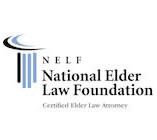Each year an estimated 2,655 deaths and 13,025 injuries occur as the result of residential building fires. The risk of death or injury from fire is even greater for people with physical, mental or sensory disabilities. Special populations such as people with disabilities, people who are deaf or hard of hearing and individuals who are visually impaired can significantly increase their chances of surviving a fire by practicing proven fire safety precautions. The United States Fire Administration (USFA) encourages individuals with special needs to read and use the following fire safety tips to help protect themselves and their homes from fire.
1. Install and Maintain Smoke Alarms
- Smoke alarms with a vibrating pad or flashing light are available for people who are deaf or hard of hearing. Additionally, smoke alarms with a strobe light outside the house to catch the attention of neighbors and emergency call systems for summoning help are also available.
- If you need assistance, ask the manager of your building or a friend or relative to install at least one smoke alarm on each level of your home.
- Make sure your smoke alarms are tested monthly and change the batteries at least once a year.
2. Plan Your Escape
- Identify at least two exits from every room.
- If you use a walker or wheelchair, check all exits to be sure you can get through the doorways easily.
- Make any necessary accommodations, such as providing exit ramps and widening doorways, to facilitate an emergency escape.
- People with mobility difficulties are encouraged to have their bedroom on the ground floor and as close as possible to an exit.
3. Don’t Isolate Yourself
People with disabilities often are excluded from the development of escape plans, as well as practicing using those escape plans and participating in fire safety drills. As a result, their vital input is omitted and their fire safety needs remain unfulfilled. Take initiative and speak up to ensure that all involved parties receive the fire safety information they need in case of an emergency.
- Speak to your family members, building manager or neighbors about your fire safety plan and practice it with them.
- Contact your local fire department’s non-emergency line and explain your special needs. They may suggest escape plan ideas and/or perform a home fire safety inspection and offer suggestions about smoke alarm placement and maintenance.
- Ask emergency providers to keep your special needs information on file.
- Keep a phone near your bed and be ready to call 911 or your local emergency number if a fire occurs.
* The information contained in this Blog is intended for general information and educational purposes only and does not constitute legal advice or an opinion of counsel.





